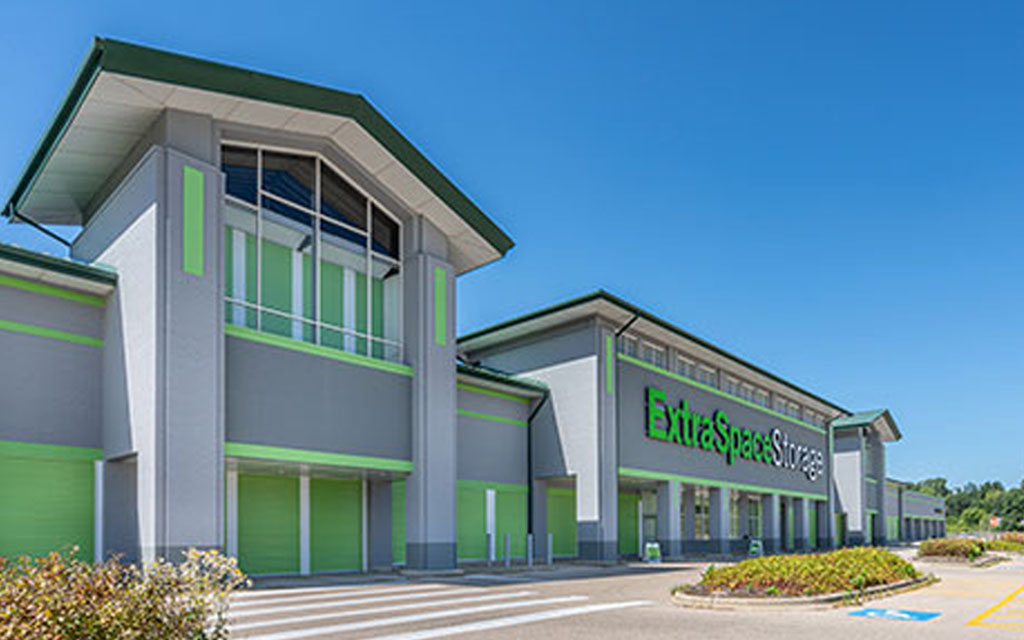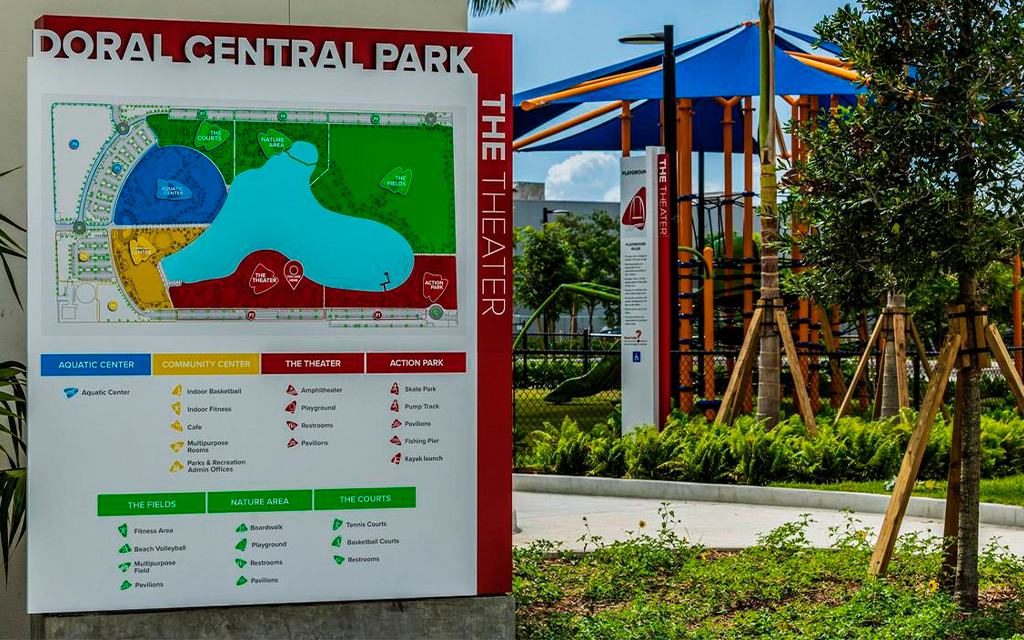Northwood Investors has acquired a collection of industrial assets totaling 1.8 million square feet across…

Self-Storage Owners Expand Portfolios, Renovate Existing Properties
Nearly one-fifth of Americans rent self-storage space, according to a recent study conducted by StorageCafe, an online platform that provides storage unit listings across the nation. Owners and operators of the property type are keen to capitalize on the strong demand. According to StorageCafe, the total amount of new storage space delivered in 2023 reached 49 million square feet, up 15.6 percent from the prior year. The national average rate for a standard 10-by-10-foot, non-climate-controlled unit is currently around $122 per month.
The primary demand drivers for self-storage are what the industry refers to as the four D’s — death, divorce, dislocation and downsizing. But there are additional factors at play. Matt Clark, director of operations for Skokie, Illinois-based StorSafe Self Storage, cites remote work and flexible lifestyles; decluttering and minimalism; and urbanization.
“With the rise of remote work, individuals seek storage solutions for work-related equipment and belongings, while those with flexible lifestyles require storage for items not needed during travels or temporary stays,” he says. “Minimalism prompts individuals to seek storage for sentimental items or occasional-use belongings. Urban dwellers in compact spaces require storage for seasonal items or bulky furniture that doesn’t fit in their homes.”
David Perlleshi, a senior director with Tampa, Florida-based Franklin Street, suggests that e-commerce and inventory management are also demand drivers for self-storage.
“The growth of e-commerce has led small businesses and online retailers to utilize self-storage units for inventory management,” he says. “These units offer a flexible, cost-effective solution for storing stock, especially for businesses operated from home or in need of additional space during peak seasons.”
Self-storage can also be useful for lifestyle and recreational equipment storage, says Frank DeSalvo, a senior director with Franklin Street.
“As people engage in more hobbies and recreational activities, they accumulate equipment that may not be used regularly, such as camping gear, sports equipment or seasonal decorations,” he says. “Self-storage provides a space to store these items safely when they are not in use.”
Furniture remains the most commonly stored item, according to StorageCafe. But one interesting trend is the increase in vehicle storage. The combined share of people renting space for all types of vehicles — including cars, recreational vehicles (RVs) and boats — stands at 9 percent, a year-over-year increase of 50 percent, according to StorageCafe. One of the reasons for the rise is the trend for RVing that accelerated in recent years.
Development preferences
Self-storage developers and operators vary on their preference for building ground-up projects versus converting retail or industrial buildings into self-storage. Anthony Chereso, CEO and president of The Inland Real Estate Group LLC in Oak Brook, Illinois, says the process between the two is not dissimilar. Both require going through an underwriting process, securing entitlements, and ensuring that market demographics and drivers for self-storage exist. For Chereso, the cost savings and timeline are the main difference and benefit for redevelopment projects.
“There’s about a 20 percent cost differential between putting up a building from the ground up versus taking an existing building, using that footprint and infrastructure, and then redesigning it and retrofitting it into self-storage,” he says.
A repositioning project usually requires a 10- to 14-month timeline from the point of acquisition to becoming operational, says Chereso. A ground-up development could take 24 months or longer.
“Speed to market is critical,” says Chereso. “The dynamics of what’s happening in the capital markets is changing rapidly, so the sooner you can get developed and into the market with a stabilized asset the better.”
Inland has completed 22 self-storage development projects over the past several years. Of those, 20 involved the redevelopment of big box retail assets. One example is the repositioning of a former Kmart store in Allentown, Pennsylvania. The property’s success has led Inland to begin an expansion project that will add 200 more units.
“I like the idea of taking these empty retail properties that are eyesores and repositioning them into useful assets that generate tax dollars for the local community,” says Chereso.
Franklin Street also specializes in converting retail or other industrial buildings into self-storage facilities.
“Conversions are preferred over ground-up development due to their efficiency,” says Perlleshi. “They require less time and are more cost effective. Typically, the process involves adding minimal interior materials such as metal wall dividers and storage doors to the existing structure.”
Extra Space Storage, which maintains a portfolio of more than 3,600 locations in 42 states, typically purchases properties rather than develop, according to Karen Pierce, division vice president in the Midwest region. The company’s investment team looks at a variety of different types of assets, including those that were converted into self-storage from other uses.
Extra Space is expanding a property in Fox Lake, Illinois, that it acquired in 2020. The expansion will add 25,000 square feet of climate-controlled units, outdoor RV spots and parking spaces. Pierce says that the expansion, which is slated for completion in 2025, will provide additional revenue growth opportunities for a location that stays occupied around 95 percent.
Clark says StorSafe management is intrigued by the potential of repurposing retail or industrial buildings into self-storage but has yet to pursue many of these types of projects. The reason is that the profitability of these opportunities hasn’t often met investor expectations.
“Repurposing existing structures offers cost-saving benefits initially but often requires significant investments in renovations and upgrades, impacting the overall return on investment,” says Clark. “We maintain a cautious approach, ensuring thorough analysis and realistic expectations for profitability and operational viability.”
StorSafe, which currently manages 29 storage facilities largely in the Midwest, recently expanded its facility in Michigan City, Indiana. The project included the addition of 82 climate-controlled units as well as a state-of-the-art water management system and a full-size truck loading dock.
Doug Coleman, senior vice president of Kansas City-based Hunt Midwest, says his firm has solely focused on the development of ground-up self-storage locations throughout metro Kansas City. So far, the developer has built five of its StorTropolis climate-controlled self-storage facilities since entering the sector in 2018. The sixth and largest location is currently under construction in Olathe, Kansas, and is expected to open in September.
StorTropolis Olathe will total 112,987 leasable square feet across 867 units of various sizes, ranging from 5-by-5-foot units to 13-by-42-foot units for boats, RVs and other large equipment. All StorTropolis facilities feature virtual leasing, 24-hour video surveillance, oversized elevators and an enclosed loading bay with direct unit access.
Market fluctuations
When assessing the fundamentals of the self-storage market, industry experts say that rental rates and occupancies are settling to historical norms after soaring during the COVID-19 pandemic.
“It got to the point where it was very expensive to lean into the self-storage sector,” says Chereso. “We’ve seen a softening, and it’s funny because people will portray that as the market is going in an opposite direction. But it’s actually reverting to the mean.”
Nationwide, the average occupancy rate for self-storage pushed above 90 percent in 2017 and has remained above that level, according to Cushman & Wakefield. The market reached peak occupancy of 93 percent in the first quarter of 2021.
“I don’t expect any big increases in rents like we’ve seen in years past as both rates and occupancy have normalized following the pandemic,” says Hunt Midwest’s Coleman. “But we will all have to adapt to the variable pricing that all the large companies are beginning to use across the country.”
Coleman says that large real estate investment trusts in the self-storage space have begun “aggressive” dynamic pricing, whereby they use artificially low introductory rents to attract new customers before quickly returning to market rates.
DeSalvo of Franklin Street says that market dynamics vary based on location, macroeconomic conditions, competition and other external variables.
“Rent prices respond to these conditions, fluctuating accordingly,” he says. “On average, absorption rates stand at around 8 square feet per capita. When saturation falls below this threshold, undersupply occurs, driving up rents. Conversely, oversupply can lead to rent decreases.”
DeSalvo explains that the saturation level of a market is measured by the square feet per person — the gross square feet of storage space available per capita within a given area. The gross square footage is calculated by taking all the square footage available within a three- or five-mile radius and dividing it by the population. Typically, a market with a per-capita inventory above the national average is considered oversupplied, while anything below is undersupplied.
Construction starts reached all-time highs in the third and fourth quarters of 2022 as developers chased surging consumer demand, says Cushman & Wakefield. Developers have since pulled back, primarily due to limitations imposed by debt markets. Midway through 2023, construction levels represented 0.3 percent of the existing supply, which the brokerage firm says is more in line with longer-term construction trends.
“With construction starts down, owners have moved to renovate or add space to their existing properties, with a focus on maximizing utility and competitive market position,” states Cushman & Wakefield.
“The cost of capital right now is creating some disconnect, but we’re seeing that gap closing,” says Chereso. “Our expectation is that the third or fourth quarter will return to a normal market.”
Overall, the self-storage market is not immune to the challenges that arise from economic fluctuations such as home sales, inflation, unemployment, interest rate changes and rising construction costs, says Clark. But he is optimistic that new opportunities are available for savvy operators. “While short-term challenges persist, the long-term outlook for self-storage remains positive, driven by ever-evolving consumer needs and industry adaptability.”
Source: https://rebusinessonline.com/








This Post Has 0 Comments